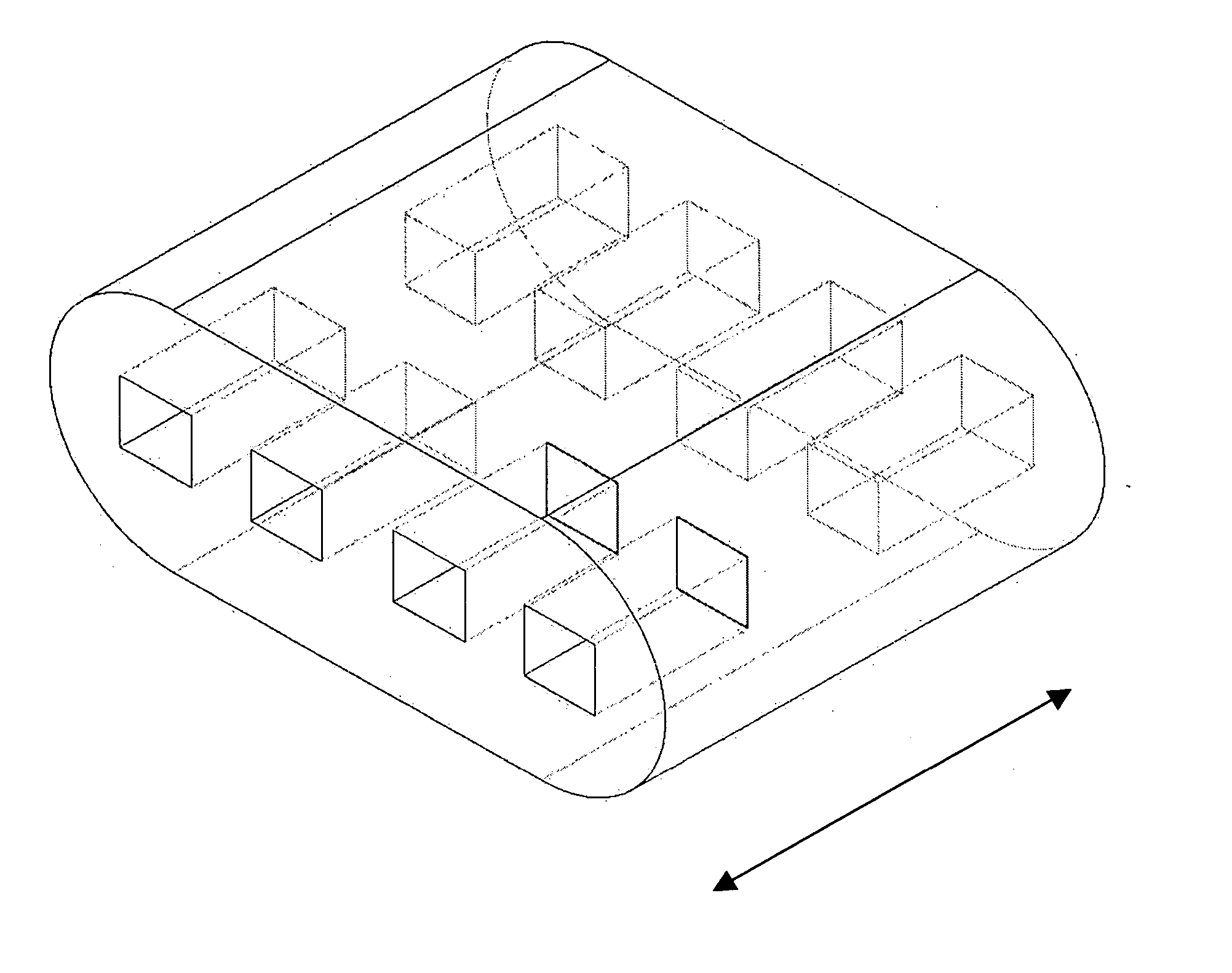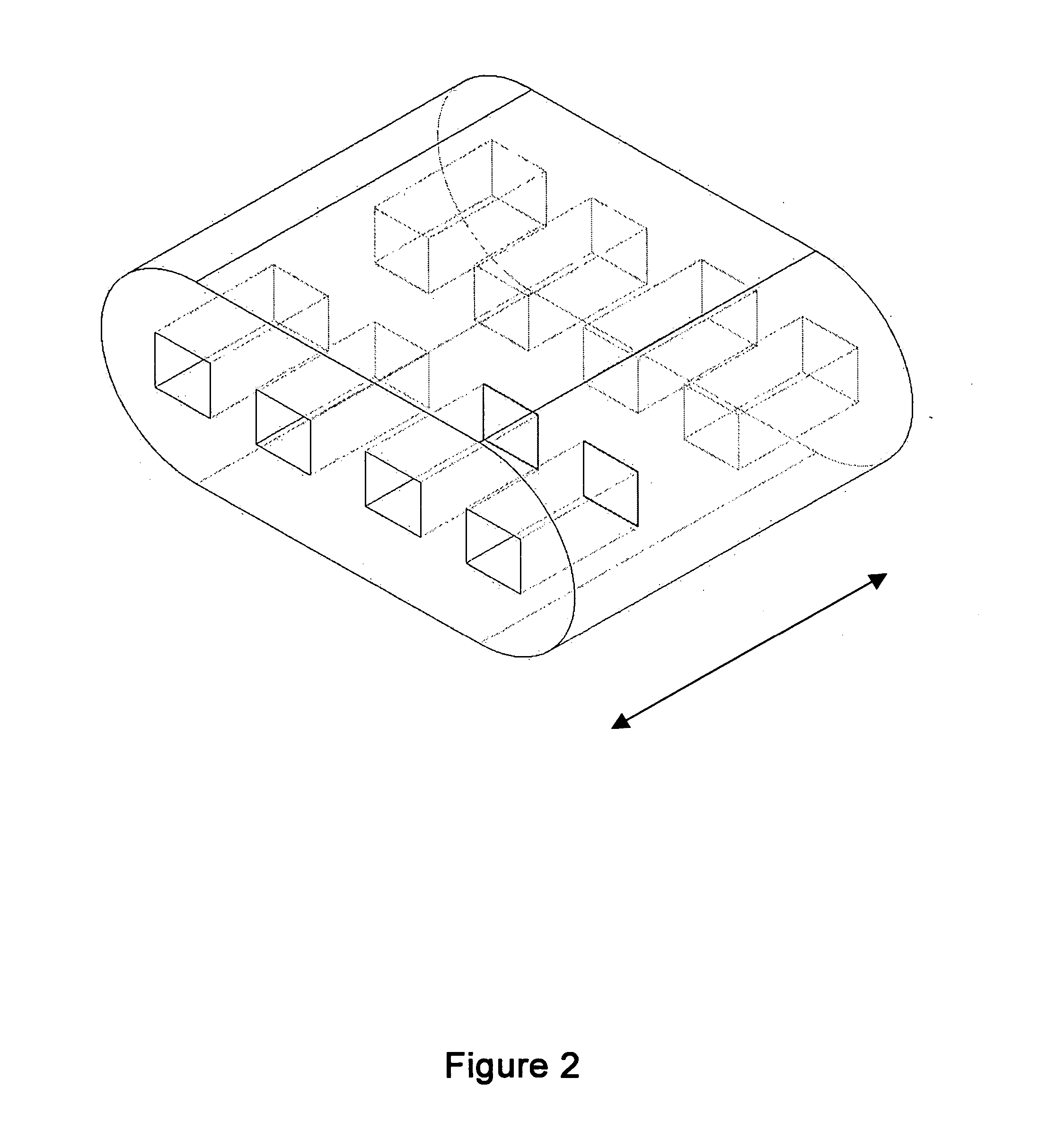Spinal cage insert, filler piece and method of manufacturing
a technology of spinal cage and filler piece, which is applied in the direction of manufacturing tools, joint implants, prostheses, etc., can solve the problems of insufficient placement of structural or bone-growth-promoting materials immediately between vertebrae, limited use of ceramic as spinal cage filler material, and inability to achieve the effect of promoting bone growth and promoting bone growth
- Summary
- Abstract
- Description
- Claims
- Application Information
AI Technical Summary
Problems solved by technology
Method used
Image
Examples
Embodiment Construction
[0056] Some embodiments of the invention may include bone void filler pieces of shapes suitable for implantation in a bone void that was surgically created or that otherwise resulted from other conditions such as disease or traumatic injury.
[0057] Some embodiments of the invention provide articles which promote bone growth. These articles may be placed in the interior of a spinal cage (spinal cage inserts).
[0058] Some embodiments of the invention provide bone-growth-promoting articles (e.g., filler pieces) which may be placed at exterior surfaces of vertebrae. These various articles can be specified and manufactured in terms of their material composition and also in terms of their geometry. Some embodiments are directed to methods of manufacturing such articles.
[0059] According to some embodiments, the spinal cage insert and / or filler piece (either of which may be referred to as an article) may be made of particles of a matrix material which are partially joined directly to each ...
PUM
| Property | Measurement | Unit |
|---|---|---|
| Length | aaaaa | aaaaa |
| Length | aaaaa | aaaaa |
| Length | aaaaa | aaaaa |
Abstract
Description
Claims
Application Information
 Login to View More
Login to View More - R&D
- Intellectual Property
- Life Sciences
- Materials
- Tech Scout
- Unparalleled Data Quality
- Higher Quality Content
- 60% Fewer Hallucinations
Browse by: Latest US Patents, China's latest patents, Technical Efficacy Thesaurus, Application Domain, Technology Topic, Popular Technical Reports.
© 2025 PatSnap. All rights reserved.Legal|Privacy policy|Modern Slavery Act Transparency Statement|Sitemap|About US| Contact US: help@patsnap.com



